Nakhon Sawan, located in central Thailand, is home to a wide variety of birds. From the majestic White-throated Kingfisher to the diminutive Blue-breasted Pitta, the diversity of bird life in Nakhon Sawan is certainly impressive.
There are over 200 species of birds in the area, including raptors, water birds, forest birds, grassland species, and more. With its wide range of habitats, the province provides ideal conditions for a variety of birds to thrive.
Whether you’re a casual birdwatcher or an experienced ornithologist, Nakhon Sawan is sure to have something to offer. So come and explore one of Thailand’s most diverse bird habitats!
1. Lesser Whistling Duck
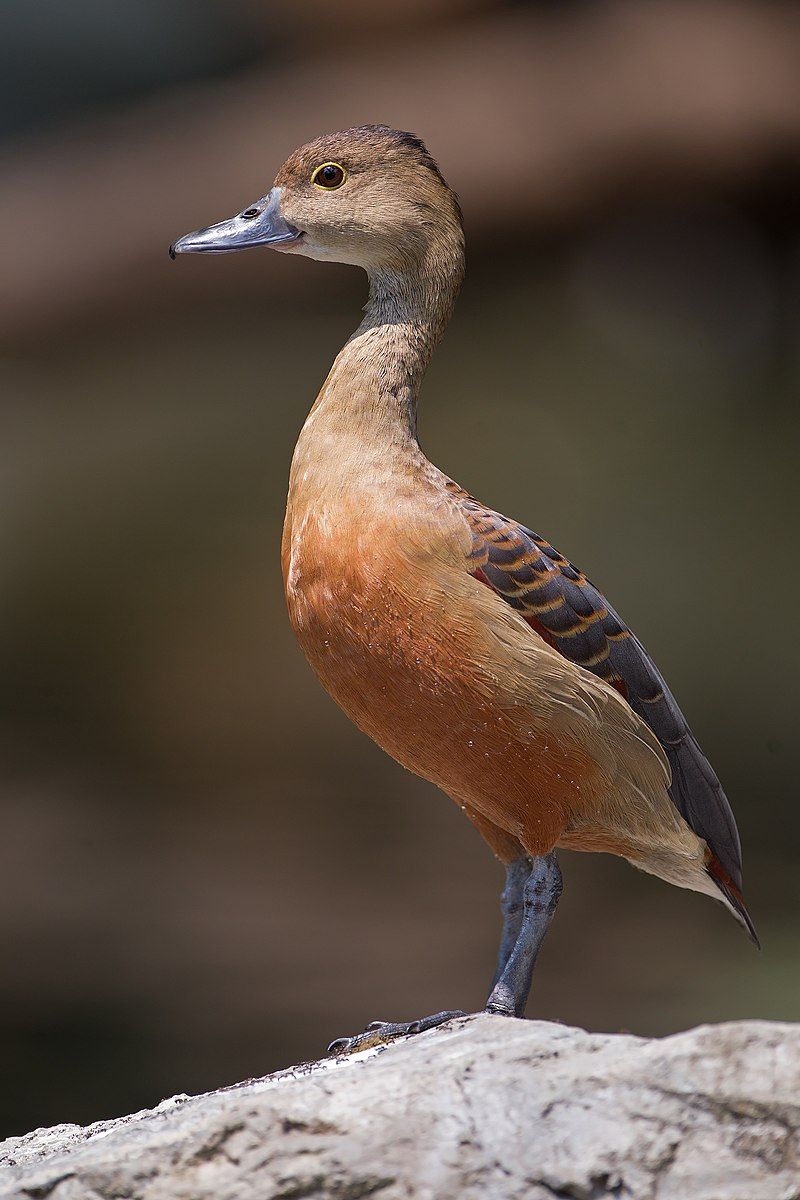
The lesser whistling duck, also known as Indian whistling duck or lesser whistling teal, is a species of whistling duck native to the Indian subcontinent and Southeast Asia. It is a waterfowl, found in wetland habitats, such as lakes, marshes, and paddy fields.
This species of duck has a unique call, earning it its name. They are nocturnal feeders, spending their days in flocks near bodies of water.
They are most often found around lakes and wet paddy fields, where they feed on aquatic plants, insects, and small fish.
They are known to form large flocks, sometimes numbering in the thousands, making them an interesting sight to behold.
The lesser whistling duck is a protected species, and their population is slowly declining due to habitat destruction and hunting.
Conservation efforts need to be taken to protect the lesser whistling duck and its habitats.
| Kingdom | Animalia |
| Phylum | Chordata |
| Class | Aves |
| Order | Anseriformes |
| Family | Anatidae |
| Genus | Dendrocygna |
| Species | D. javanica |
2. Garganey
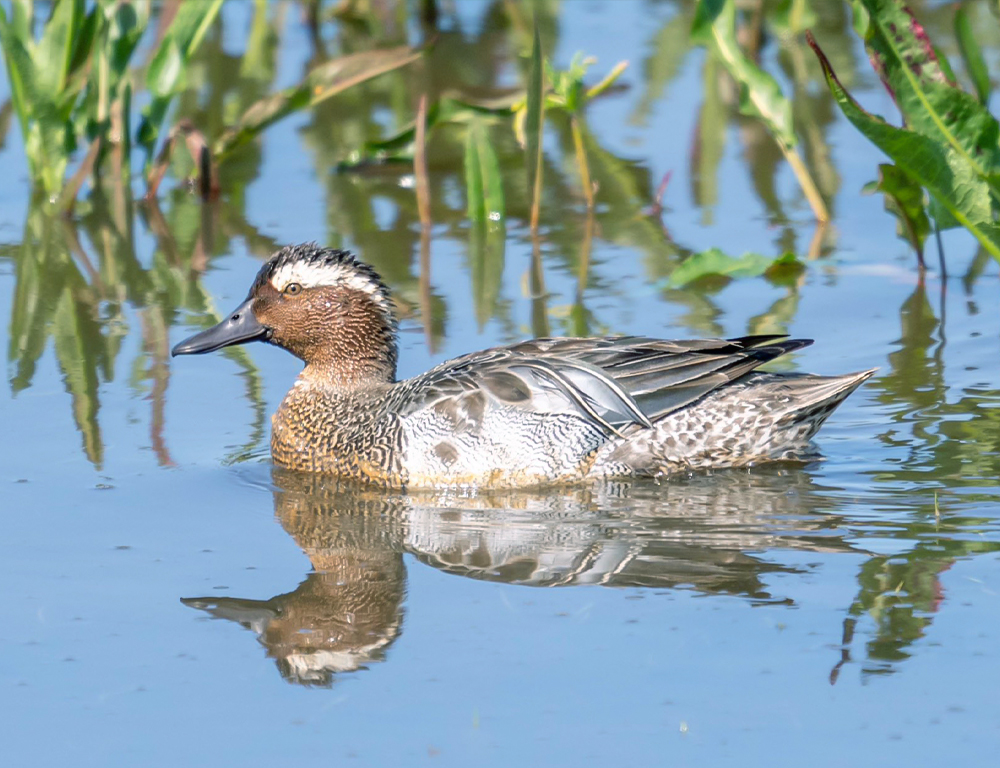
The garganey is a small species of dabbling duck found throughout Europe and the Palearctic, making it one of the most widely distributed ducks in the world.
It is a strictly migratory species, meaning that the entire population will migrate each year to warmer climates in southern Africa, India, Bangladesh, and Australasia during the winter months of the Northern Hemisphere.
During the journey, the garganey can form huge flocks of birds, making them a spectacular sight for birdwatchers and wildlife enthusiasts. In these wintering grounds, the birds can feed and rest, safe from the harsh cold temperatures in their native habitats.
Once the weather in the Northern Hemisphere has warmed up, the garganey will begin their return journey to their breeding grounds, where they will once again raise their young.
| Kingdom | Animalia |
| Phylum | Chordata |
| Class | Aves |
| Order | Anseriformes |
| Family | Anatidae |
| Genus | Spatula |
| Species | S. querquedula |
3. Black-Winged Stilt
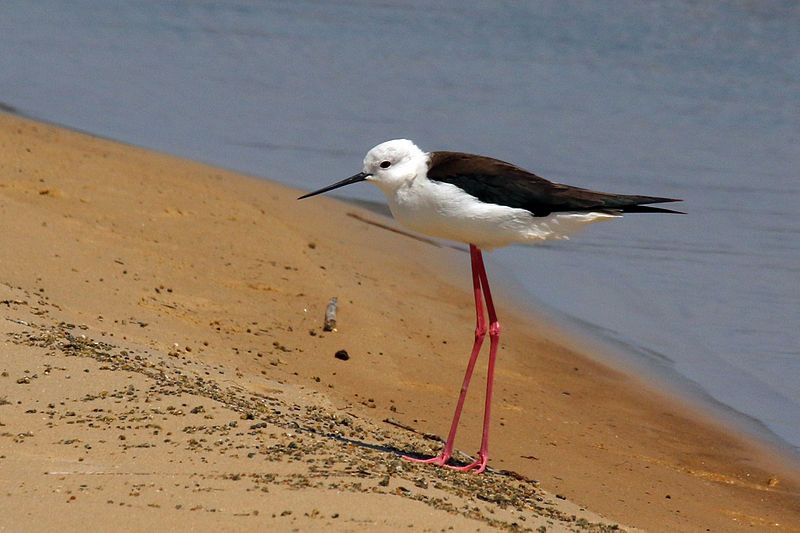
The black-winged stilt is a species of bird that belongs to the avocet and stilt family. It is widely distributed across many parts of the world, including Europe, Africa, Asia, North America, and South America.
It is a very long-legged wader, typically taking large strides across the shallow waters it inhabits. The scientific name for this particular species of bird is H. himantopus.
This name is used to refer to a single species that can be found in many different places across the world, making it almost cosmopolitan. It is easily recognizable due to its long legs, long neck, and black wings.
The black-winged stilt is a species of bird that is known for its graceful wading movements. It is a common sight in wetlands, lagoons, and mudflats, as well as other shallow waters.
It has a diet consisting mainly of insects, small fish, and crustaceans, which it catches by using its long beak to probe the water.
The black-winged stilt is a species that is highly adapted to its environment, with its long legs allowing it to move quickly and gracefully in shallow waters.
It is a social species, often seen in large flocks, and it has a loud, melodious call that can be heard from a distance. The black-winged stilt is an important species to the ecosystem, and it is important to protect its habitats to ensure its continued survival.
| Kingdom | Animalia |
| Phylum | Chordata |
| Class | Aves |
| Order | Charadriiformes |
| Family | Recurvirostridae |
| Genus | Himantopus |
| Species | H. himantopus |
4. Pink-Necked Green Pigeon
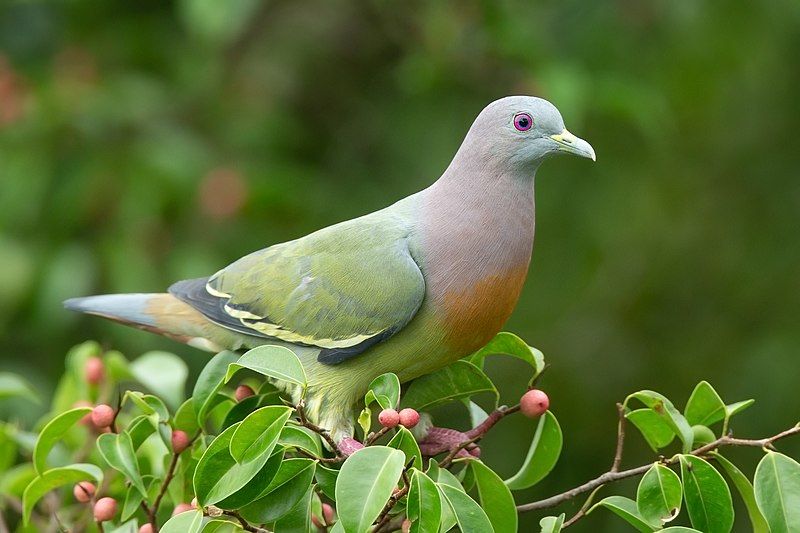
The pink-necked green pigeon is a species of bird that belongs to the family Columbidae, commonly known as the pigeon and dove family.
This species is very common in Southeast Asia, with its range extending from Myanmar and Vietnam all the way south to the main islands of Indonesia and the Philippines.
This species is easily recognizable due to its distinctive pink neck and green feathers, hence the name pink-necked green pigeon.
Its wings are typically gray, and its tail is short and rounded. These birds usually inhabit lowland forests, but they can also be found in more open areas, such as parks and gardens. They eat a variety of fruits and seeds, and can often be observed in large flocks.
The pink-necked green pigeon is an important part of the local ecosystem, as it helps to disperse seeds and spread plant species. Its presence is also important for cultural reasons, as it is often mentioned in local folklore and myths.
| Kingdom | Animalia |
| Phylum | Chordata |
| Class | Aves |
| Order | Columbiformes |
| Family | Columbidae |
| Genus | Treron |
| Species | T. vernans |
5. Pheasant-Tailed Jacana
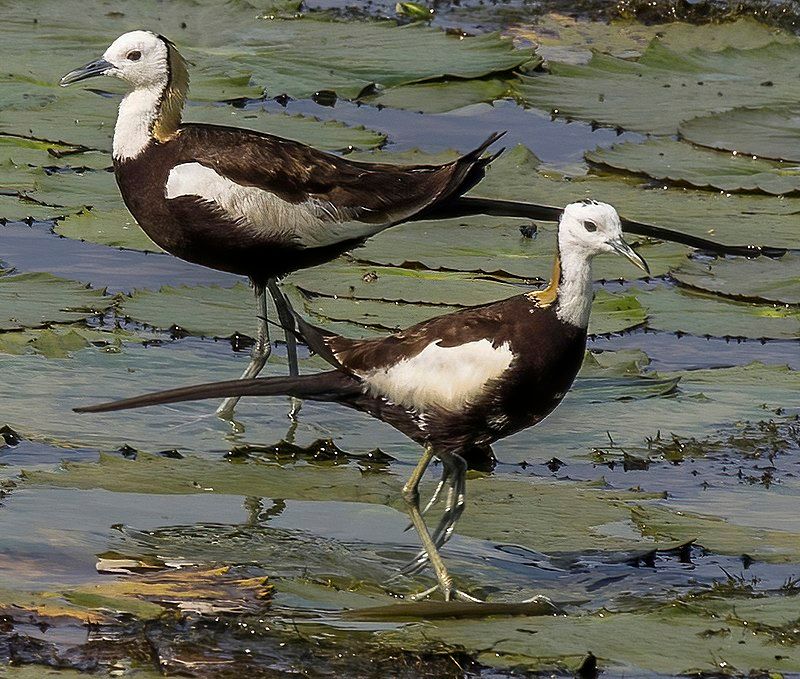
The pheasant-tailed jacana is a type of bird that belongs to the genus Hydrophasianus, which is a single-species genus. These birds are known for their unique physical characteristics, notably their long toes and nails.
This allows them to walk on floating vegetation in shallow lakes, which is their preferred habitat. As with other jacanas, this adaptation enables them to feed on insects and other small creatures that live in and around the water.
As a result, these birds can be found in parts of Southeast Asia, India, and Africa, where shallow lakes are abundant. The pheasant-tailed jacana is a striking bird, with a black chest, yellow head and tail, and long white feathers. They also have bright red eyes and a blue beak.
The males of this species are usually larger than the females, and they have a distinctive plume of feathers that protrude from the back of their heads. Overall, the pheasant-tailed jacana is an interesting bird with unique adaptations that enable it to thrive in its preferred environment.
With its bright colors and distinctive features, it is a species that is sure to captivate the attention of any bird-lover.
| Kingdom | Animalia |
| Phylum | Chordata |
| Class | Aves |
| Order | Charadriiformes |
| Family | Jacanidae |
| Genus | Hydrophasianus |
| Species | H. chirurgus |
6. Purple Heron
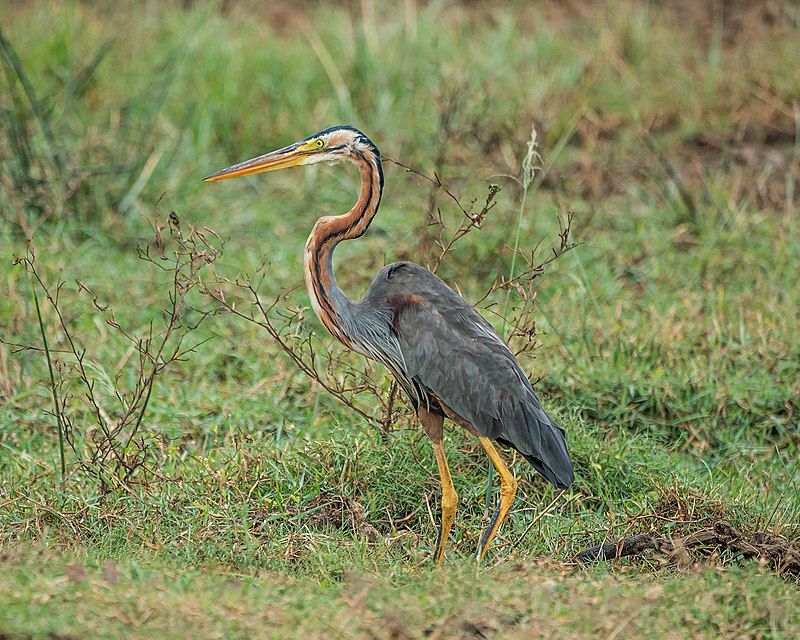
The purple heron is a species of wading bird that belongs to the heron family, Ardeidae. It is widely distributed across Africa, central and southern Europe, and southern and eastern Asia.
The scientific name of the bird is derived from two Latin terms, “arde” meaning “heron” and “purpureus” meaning “colored purple”.
The name accurately reflects the characteristic plumage of the species, which is predominantly made up of shades of purple. The purple heron has an impressive wingspan of up to 1.5 meters and can reach heights of up to 1 meter when in flight.
Its long legs allow the bird to wade through shallow bodies of water in search of food such as fish, frogs, and aquatic insects. The heron also feeds on small mammals and reptiles, as well as young waterfowl. The purple heron nests in colonies, often on the ground near water.
The nests are typically made from twigs, reeds, and grass. The female typically lays 3-5 eggs in a clutch. Both parents take turns incubating the eggs for about four weeks until they hatch.
The young herons are cared for by both parents and fledge from the nest after about two months. In the wild, the purple heron can live up to 15 years and has adapted to a wide range of habitats. It can be found in wetlands, estuaries, rivers, lakes, and even coastal areas.
Unfortunately, the species is threatened by habitat destruction, pollution, and illegal hunting. Conservation efforts are being made to help protect the species and its habitats.
| Kingdom | Animalia |
| Phylum | Chordata |
| Class | Aves |
| Order | Pelecaniformes |
| Family | Ardeidae |
| Genus | Ardea |
| Species | A. purpurea |
7. Bronze-Winged Jacana
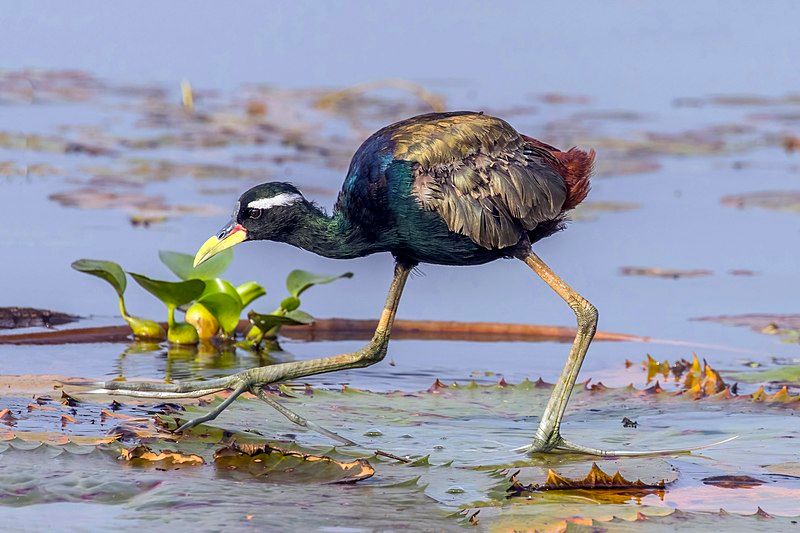
The bronze-winged jacana is a unique wading bird found in South and Southeast Asia. It is the only species in the genus Metopidius and is a member of the Jacanidae family. This bird has a fascinating adaptation to its environment.
It forages on aquatic vegetation such as lilies, and its long feet are specially adapted to prevent it from sinking into the water.
This adaptation is an effective way for the bird to remain light enough to float across the water while still giving it enough stability to move through the water. The long feet also spread the bird’s weight to make sure it does not sink.
This is a very useful adaptation for the jacana that has enabled it to survive in its environment.
| Kingdom | Animalia |
| Phylum | Chordata |
| Class | Aves |
| Order | Charadriiformes |
| Family | Jacanidae |
| Genus | Metopidius |
| Species | M. indicus |
8. White-Browed Crake
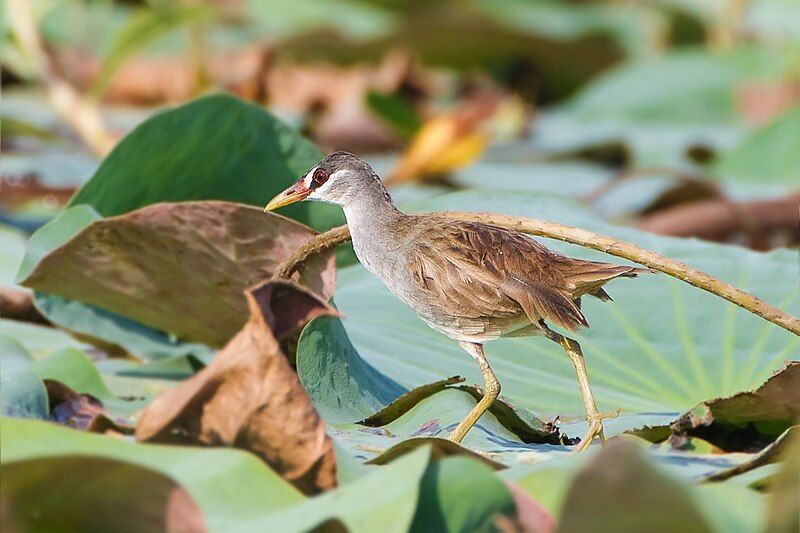
The white-browed crake is a species of bird that belongs to the Rallidae family.
It is a predominantly tropical species that is found across many parts of the world, including Australia, Brunei, Cambodia, Fiji, Hong Kong, Indonesia, Japan, India, Malaysia, Micronesia, New Caledonia, Palau, Papua New Guinea, the Philippines, Samoa, Singapore, Solomon Islands, Thailand, and Vanuatu.
This species is known for its white brows, which are prominent even when viewed from a distance.
While it is a relatively small species of bird, its striking features make it quite recognizable. The white-browed crake is a ground-dwelling species that prefers grasslands, shrublands, and wetlands. It feeds on small insects, seeds, and other plant matter.
It is an omnivorous species that relies on both plant and animal matter for sustenance.
In addition, the white-browed crake is also known to forage in shallow water for food. The white-browed crake is known to live in small flocks of up to five individuals, often forming monogamous pairs.
Breeding season is usually in the wetter months of the year, although this varies depending on the region. The female lays a clutch of up to five eggs, which she incubates alone.
The chicks are cared for by both parents for the first few weeks of life before they can become independent. Overall, the white-browed crake is a widespread species that is found across many parts of the world.
It is a small species of bird that is easily recognizable due to its striking white brows. It is an adaptable species that can be found in a variety of habitats and feed on both plant and animal matter. It is also known to form monogamous pairs and care for its young.
| Kingdom | Animalia |
| Phylum | Chordata |
| Class | Aves |
| Order | Gruiformes |
| Family | Rallidae |
| Genus | Poliolimnas |
| Species | P. cinereus |
9. Spotted Owlet
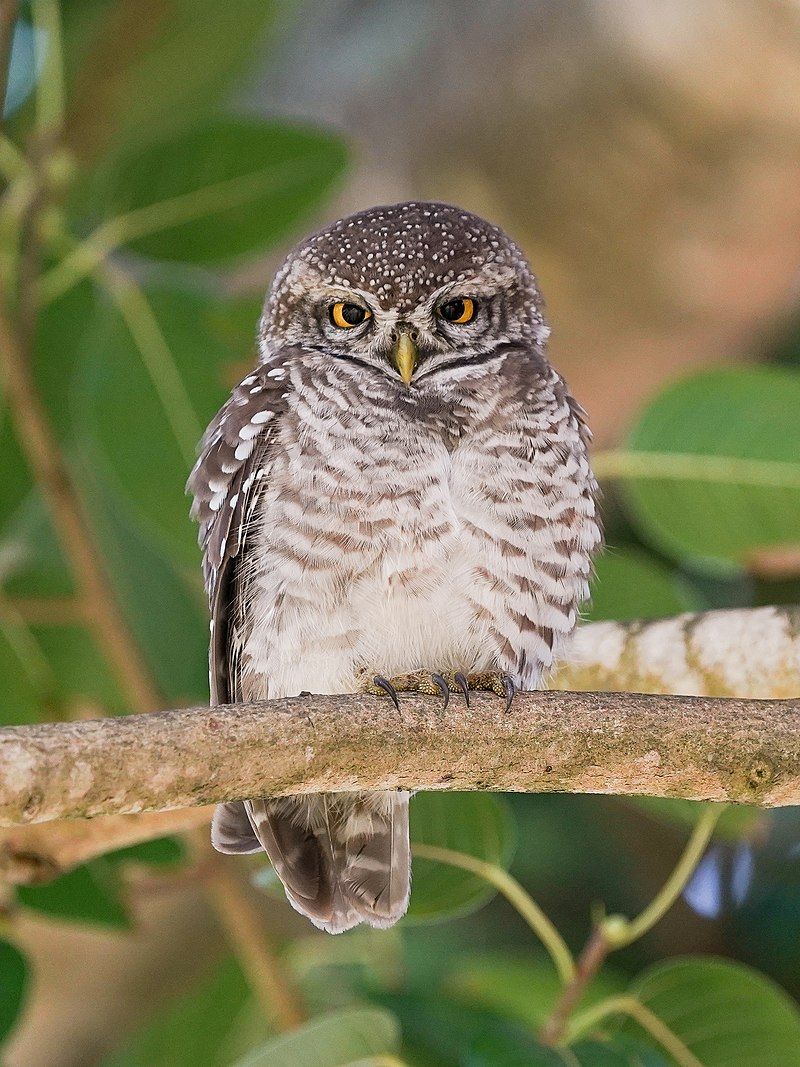
The spotted owlet is a small owl that can be found throughout many parts of tropical Asia, ranging from mainland India to Southeast Asia.
This species is a common resident in a variety of open habitats, including farmland and human settlements, allowing them to easily adapt to living in cities as well.
They are known to roost in small groups, typically in the hollows of trees or inside cavities in rocks and buildings.
This is beneficial for them as it provides them with protection from potential predators, while also allowing them to stay close together and remain socially connected.
Furthermore, the spotted owlet can thrive in such diverse habitats due to its ability to feed on a variety of prey, including insects, lizards, and small birds.
| Kingdom | Animalia |
| Phylum | Chordata |
| Class | Aves |
| Order | Strigiformes |
| Family | Strigidae |
| Genus | Athene |
| Species | A. brama |
10. Spot-Billed Pelican
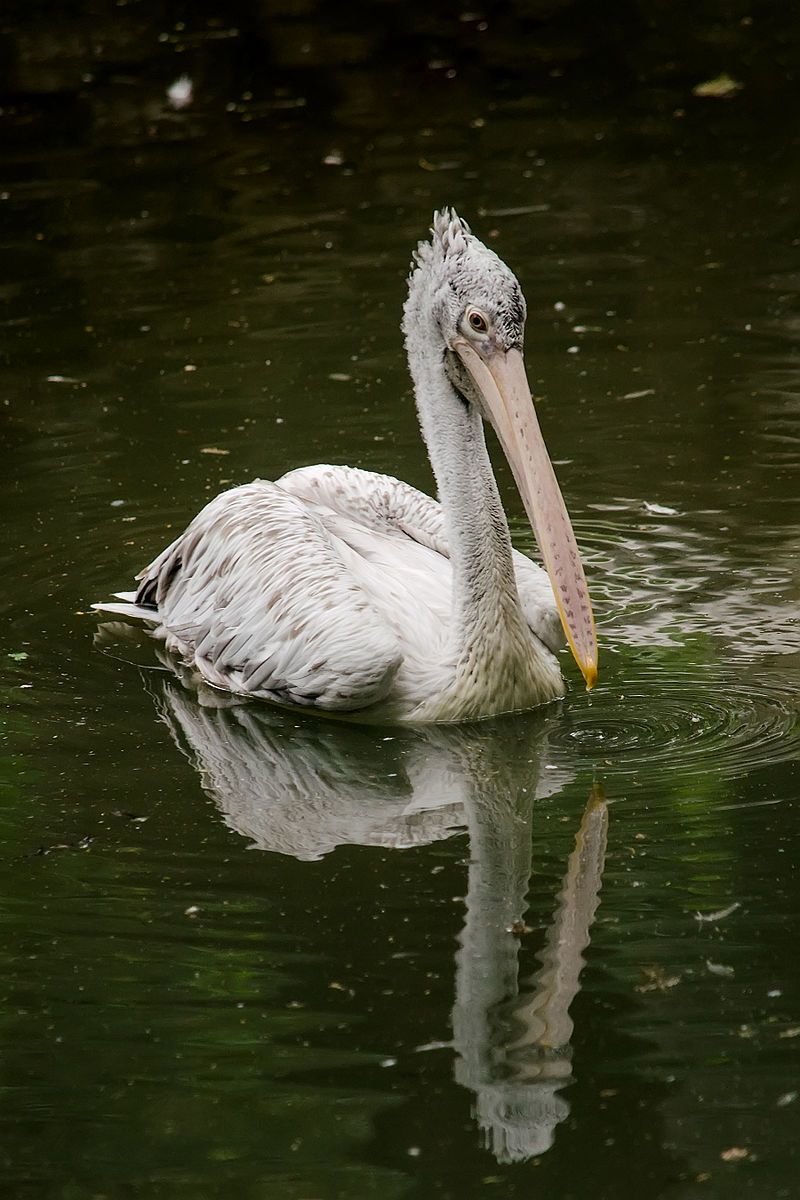
The Spot-billed Pelican, also known as the Gray Pelican, is a species of bird native to southern Asia, ranging from southern Iran to Indonesia. It is a member of the pelican family, which is known for its large size and distinctive bill.
The Spot-billed Pelican is commonly found near large bodies of water, both inland and coastal. It particularly prefers large lakes, where it can make its home and easily find food.
It feeds on a variety of fish, crustaceans, and other aquatic life, making it an important predator in its natural habitat. The Spot-billed Pelican is considered a threatened species due to several factors, including habitat destruction and hunting.
It is also vulnerable to the effects of pollution, including plastic debris in the water. Conservation efforts are being made to protect the species and ensure its future survival.
| Kingdom | Animalia |
| Phylum | Chordata |
| Class | Aves |
| Order | Pelecaniformes |
| Family | Pelecanidae |
| Genus | Pelecanus |
| Species | P. philippensis |
11. Pied Kingfisher
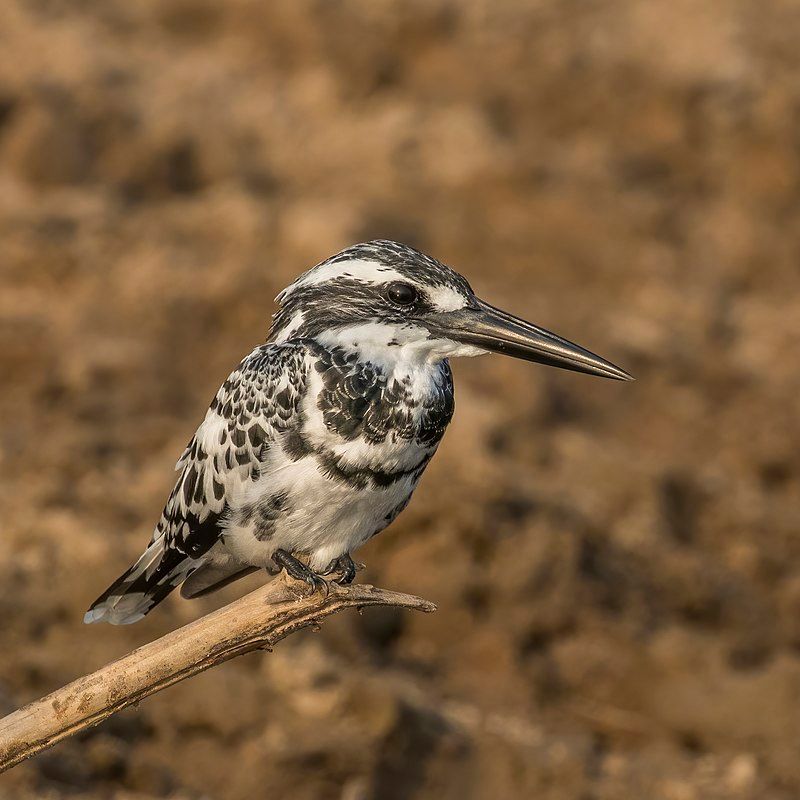
The pied kingfisher is a species of water bird that is found across vast swathes of Africa and Asia. It was first described by the famous 18th-century Swedish naturalist Carl Linnaeus in 1758 and has since been divided into five distinct subspecies.
These subspecies vary in distribution, size, and plumage pattern, giving the species its unique and wide-ranging appearance. The pied kingfisher is a medium-sized bird, typically measuring around 25-27 cm in length, with a wingspan of 37-42 cm.
It has a black and white striped head, a white throat, and a dark back. Its diet mainly consists of small fish, crustaceans, and aquatic insects. The species is often seen perched on rocks or branches near water bodies, from which it dives into the water to catch prey.
It is also known to perform aerial dives from great heights, plunging into the water and emerging with a fish in its beak.
| Kingdom | Animalia |
| Phylum | Chordata |
| Class | Aves |
| Order | Coraciiformes |
| Family | Alcedinidae |
| Genus | Ceryle |
| Species | C. rudis |
12. Baer’s Pochard
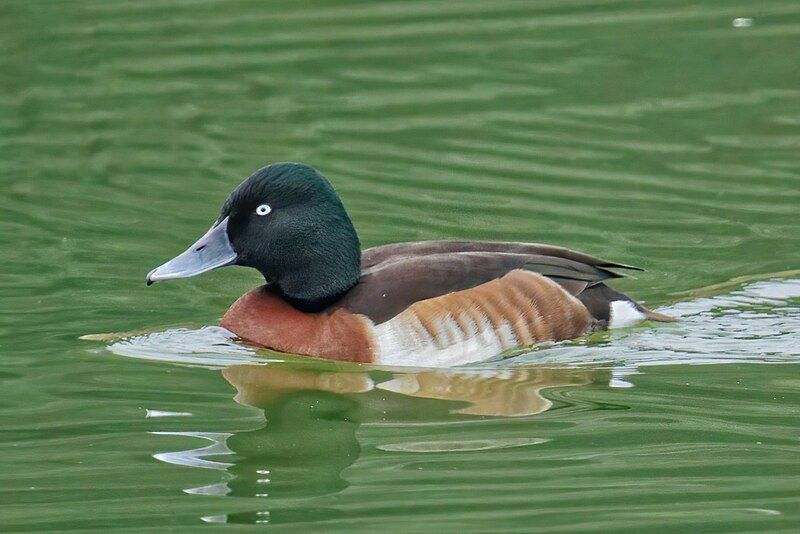
Baer’s pochard is a species of diving duck that is found mainly in eastern Asia. It is a resident bird in North and Central China, where it breeds, and migrates in winter to southern China, Vietnam, Japan, and India.
This species is the only one of its type, as it is monotypic, meaning it is the only species in its genus. The holotype was collected in the middle Amur region, which is located in the southeast of Russia.
This species is listed as vulnerable on the IUCN Red List, due to its decreasing population numbers. The main threats to this species include loss of habitat due to human activities, hunting and overfishing in its breeding grounds, and water pollution.
To protect this species, conservation efforts are needed to reduce these threats. This includes improved regulation of hunting and fishing, as well as restoration of wetlands and other natural habitats.
| Kingdom | Animalia |
| Phylum | Chordata |
| Class | Aves |
| Order | Anseriformes |
| Family | Anatidae |
| Genus | Aythya |
| Species | A. baeri |
Conclusion
Nakhon Sawan is a great place to observe and appreciate birds. It is home to many species of birds, both native and migratory, and is a great place for bird-watching enthusiasts.
The landscape of Nakhon Sawan is diverse and provides a great habitat for many species of birds, making it an ideal location for bird lovers. With its diverse habitats, Nakhon Sawan is a great place to explore the wonders of birds.